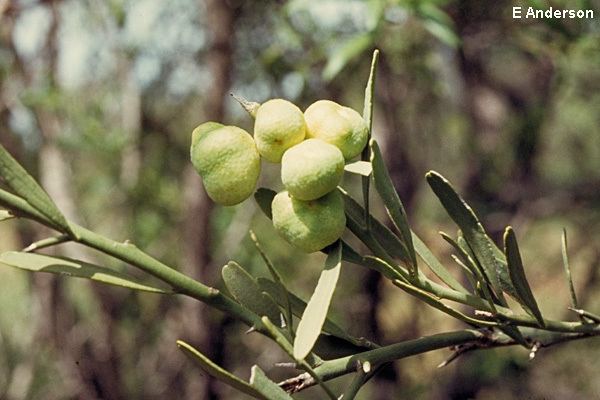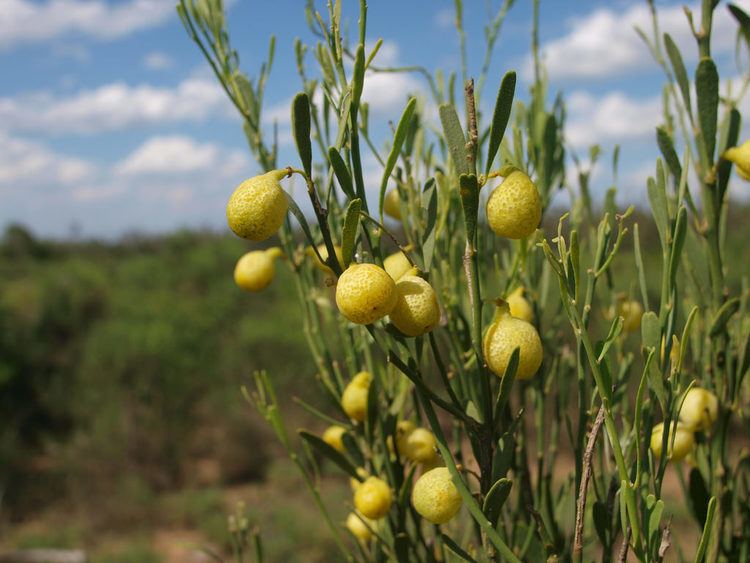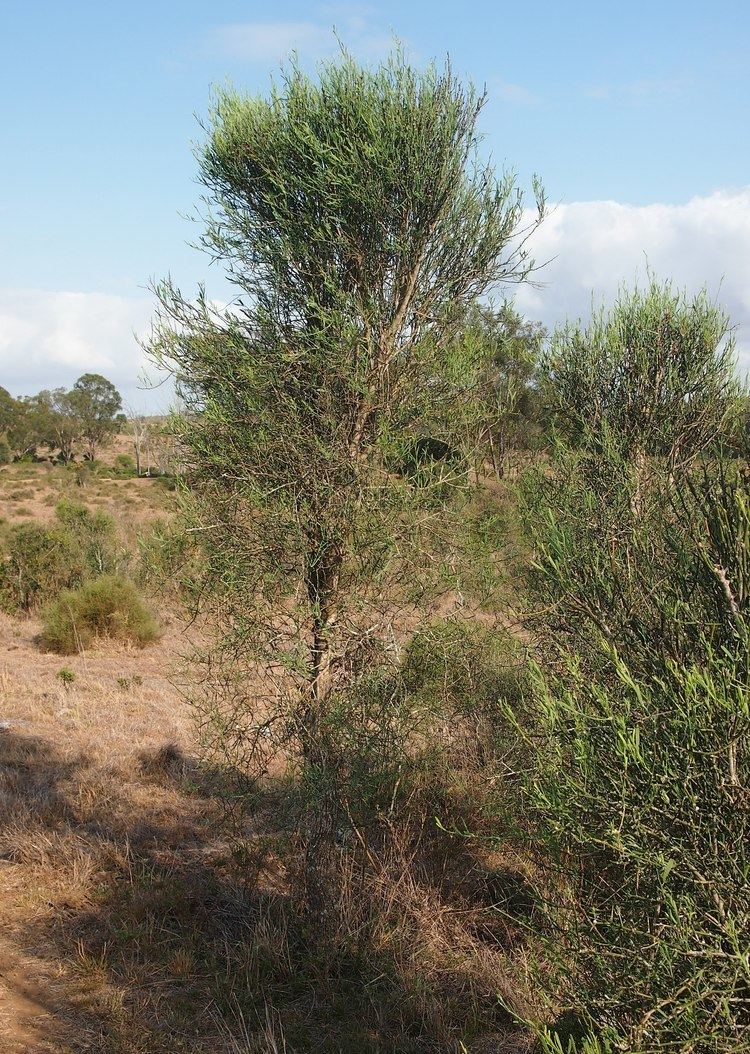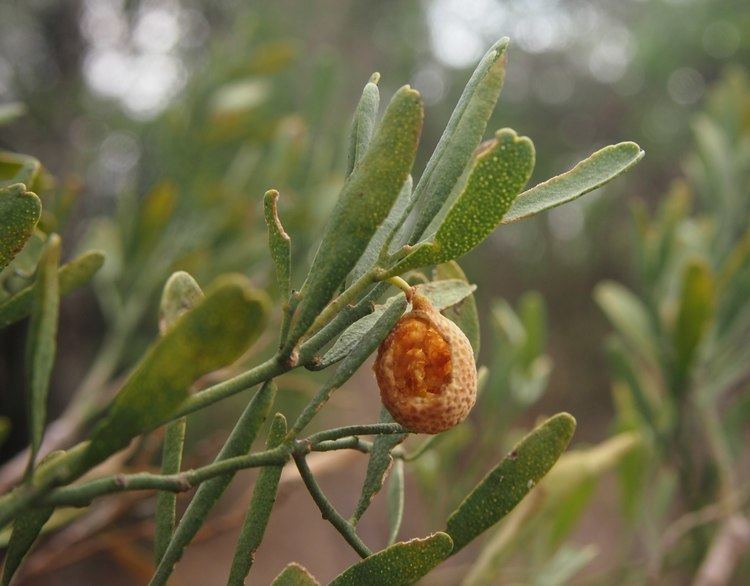Rank Species | ||
 | ||
Similar Finger Lime, Orangelo, Blood lime, Lemon aspen, Water | ||
Citrus glauca, commonly known as the desert lime, is a thorny shrub or small tree native to Queensland, New South Wales, and South Australia.
Contents

Taxonomy
The taxonomy of the Desert lime is controversial.

Under the Swingle system, it was classified in the genus Eremocitrus, a close relative of the genus Citrus. More recent taxonomy considers C. glauca to be included in the genus Citrus, and most authorities treat it this way. Citrus glauca is therefore one of the most resilient Citrus species, and is comparatively heat, drought, and cold tolerant. Hence the species is potentially important for Citrus breeding programs, and readily hybridises with many common Citrus species.
Economic uses

The desert lime fruit is a highly prized bushfood. Traditionally, it is wild-harvested from surviving bushland areas, where it is relatively common. However, C. glauca has also been extensively cleared from some areas due to the ongoing conversion of the wild bush into agricultural fields. The fruit are used in a range of products, including marmalades, beverages, and succade. It has a strong lime-like flavour.

The fruit is beginning to be domesticated. Commercial cultivation of this fruit is beginning to reduce the reliance on wild-harvested product.
Australian outback lime

The Australian Outback Lime was selected by CSIRO scientists from the regular desert lime. It is characterised by its upright habit, relatively large, flavoursome fruit, high yield, uniform ripening time, lack of thorns, and suitability for mechanical harvesting. The Australian Outback Lime was cultivated at the former CSIRO Plant Industry site at Merbein, Victoria by Dr. Steve Sykes.
Hybrids
The eremolemon is thought to be a Citrus glauca × Citrus meyeri hybrid. It grows quickly and tolerates saline soil. Citrus plants hybridise readily. The eremolemon is thought to be a natural true-breeding cross between the desert lime and the Meyer lemon. Other hybrids include eremoranges, eremoradias (hybrid with a sour orange) and citrangeremos (hybrid with a citrange).
